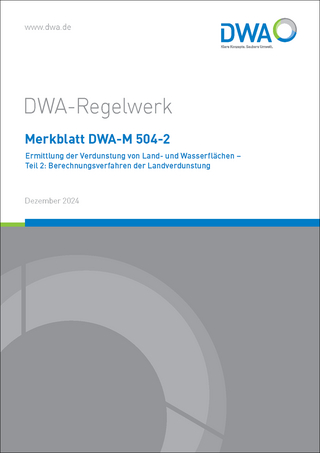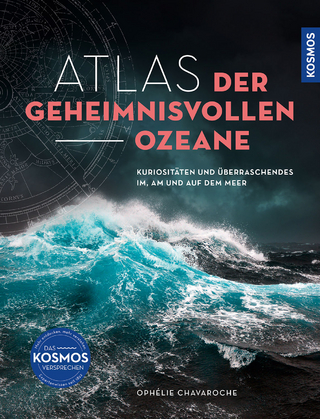
The Indian Ocean and its Role in the Global Climate System
Elsevier Science Publishing Co Inc (Verlag)
978-0-12-822698-8 (ISBN)
Dr. Caroline Ummenhofer received a Joint Honours B.Sc. in Marine Biology and Oceanography from University of Wales in the UK, followed by a PhD in Applied Mathematics, specializing in climate modeling, from the University of New South Wales in Sydney, Australia. Since 2012, she holds a faculty position in the Physical Oceanography Department at Woods Hole Oceanographic Institution, USA. Dr. Ummenhofer has won several awards, including the Uwe Radok Award by the Australian Meteorological and Oceanographic Society, the Eureka Prize for Water Research and Innovation by the Australian Museum, and the James B. Macelwane Medal by the American Geophysical Union (AGU). Her research addresses the hydrological cycle with a focus on the Indian Ocean, its variability on seasonal to multi-decadal timescales and its role for global and regional climate, including extreme events such as droughts and floods. Dr. Ummenhofer is a fellow of the AGU, was co-chair of the US CLIVAR Process Study and Model Improvement Panel, member of the US CLIVAR Scientific Steering Committee, and served on various other panels, including the CLIVAR Indian Ocean Regional Panel and the Pacific Decadal Variability Working Group. Dr. Raleigh Hood graduated cum laude with a B.S. in Oceanography from the University of Washington, Washington State, USA, and received his Ph.D. in Oceanography from Scripps Institution of Oceanography, University of California, San Diego, USA. His Ph.D. thesis examined the impact of coastal upwelling on phytoplankton community composition and productivity off northern California, USA. Dr. Hood did his postdoctoral research at Oregon State University and the University of Miami with the latter focused on modeling biogeochemical variability in the North Atlantic and the Indian Ocean. He is currently a full professor at the University of Maryland Center for Environmental Science where he has been a faculty member since 1995. Dr. Hood has authored and co-authored more than 90 peer-reviewed research papers and also numerous popular articles focusing on marine biogeochemical and ecological processes over a wide range of spatial scales. Dr. Hood has been involved in research and program development in the Indian Ocean for more than 25 years. These efforts include co-development of one of the first coupled physical-biogeochemical models of the Indian Ocean, and the formation of the Sustained Indian Ocean Biogeochemistry and Ecosystem Research (SIBER) Program and the Second International Indian Ocean Expedition (IIOE-2). Dr. Hood was chair of the SIBER Steering Committee from 2010 to 2019 and he is currently a member of the IIOE-2 Core Group / Steering Committee as co-chair of the Science and Research Working Group. Dr. Hood was the lead author of the SIBER and IIOE-2 Science Plans. He was also a member of the US Ocean Carbon Biogeochemistry Program Steering Committee from 2019 to 2021.
1. Introduction to the Indian Ocean
2. A brief historical overview of the maritime Indian Ocean world
3. Past, present, and future of the South Asian monsoon
4. Intraseasonal variability in the Indian Ocean region
5. Climate phenomena of the Indian Ocean
6. Extreme events and impacts in the Indian Ocean
7. Impacts of the Indian Ocean on regional and global climate
8. Indian Ocean circulation
9. Oceanic basin connections
10. Decadal Indian Ocean variability
11. Indian Ocean primary productivity and fisheries variability
12. Oxygen, carbon, and pH variability in the Indian Ocean
13. Nutrient, phytoplankton and zooplankton variability in the Indian Ocean
14. Air-sea exchange and its impact on biogeochemistry in the Indian Ocean
15. Microbial ecology of the Indian Ocean
16. Physical and biogeochemical characteristics of the Indian Ocean marginal seas
17. The Indian Ocean Observing System (IndOOS)
18. Modeling the Indian Ocean
19. Paleoclimate evidence of Indian Ocean variability across a range of timescales
20. Future projections for the tropical Indian Ocean
| Erscheinungsdatum | 27.04.2024 |
|---|---|
| Sprache | englisch |
| Maße | 216 x 276 mm |
| Gewicht | 450 g |
| Themenwelt | Naturwissenschaften ► Geowissenschaften ► Hydrologie / Ozeanografie |
| Naturwissenschaften ► Geowissenschaften ► Meteorologie / Klimatologie | |
| ISBN-10 | 0-12-822698-6 / 0128226986 |
| ISBN-13 | 978-0-12-822698-8 / 9780128226988 |
| Zustand | Neuware |
| Informationen gemäß Produktsicherheitsverordnung (GPSR) | |
| Haben Sie eine Frage zum Produkt? |
aus dem Bereich


